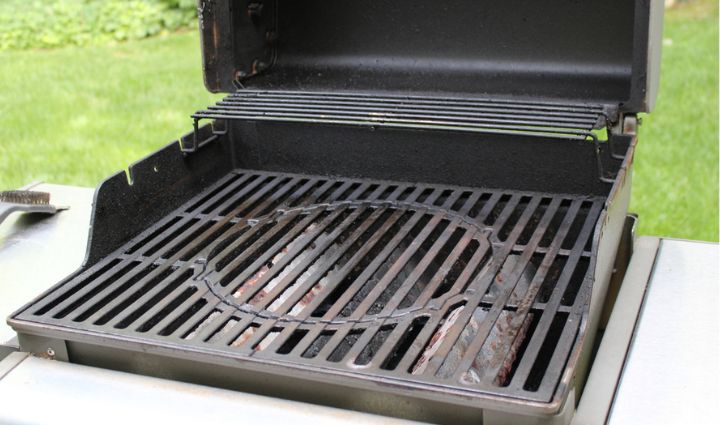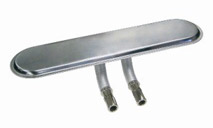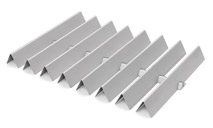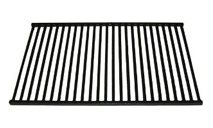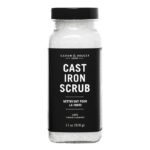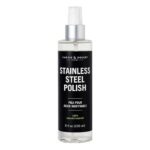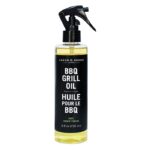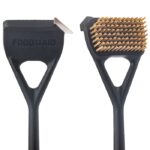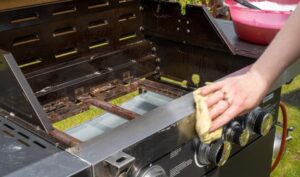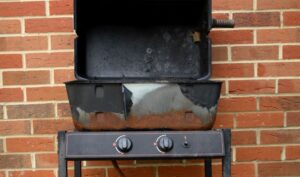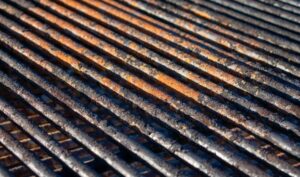The Complete Guide to Troubleshooting Gas Grill Issues is your source for step-by-step instructions on how to diagnose and fix the most common gas grill issues. Whether your grill isn’t heating properly, won’t stay lit, or simply has rusty parts, we’ve got the answers you need to get your gas barbecue firing on all cylinders.
Whether you’ve been ignoring it for a while or your grill unexpectedly greets you post-winter with fresh patches of rust, rust on your grill parts is never something you want to find.
In some cases, rust can be removed and repaired or replaced and even prevented, allowing your rusty barbecue to continue cooking for many more seasons to come. We’ll call this “good rust”. Rust is “bad” if it can’t be removed or repaired, or if it has penetrated deep enough to require a replacement part.
In this section of the Complete Guide to Troubleshooting Gas Grill Issues, we’ll explore the problem of the rusty barbecue, including:
- Parts of the grill that rust
- Good vs bad BBQ rust
- How do I clean my rusty BBQ?
- Preventative care
Let’s get cooking.
4 Things To Know About Your Rusty Barbecue
1. Parts of the grill that rust
Essentially any part of the grill that is metal can rust, but there are some areas that are prone to developing rust faster than others. These commonly include the external components, which have to contend directly with weather, as well as the internal components that are exposed to grease, food debris, and fire.
Rust forming on these parts typically causes the most trouble:
- Grill burner box and hood
- Cotter and hinge pins (these are the parts that attach your grill lid to the grill bottom)
- Screws and bolts (responsible for attaching various components)
- Grates
- Heat plates
- Burners and carryover tubes
2. Good vs. bad BBQ rust
Thankfully, rust isn’t always a death sentence for your grill. Rust is never a good thing on a barbecue, but there are stages and degrees of rustiness. In the early stages, rust can be removed before it transforms into corrosion and permanent damage. This is what we consider “good” rust, but you have to take action swiftly to stop it from spreading and keep it from deteriorating further. You can save your rusty barbecue at this point with regular cleaning and preventative care.
“Bad” BBQ rust refers to any patch that has moved beyond surface-level or “rust dust” and into full-on corrosion. If pieces are flaking off or there are holes, this is bad rust and you may need to consider replacing parts entirely at this point.
Need a replacement part for your grill? Shop our full selection of replacement parts.
Shop for replacement parts:
3. How to clean a rusty BBQ
As long as your grill only has surface-level rust, you can usually clean it with just a few household products:
- White vinegar mixed with water, stainless steel cleaner, or an all natural grill cleaner
- A good-quality scrubbing brush
- Penetrating oil (such as WD-40) for removing any seized rusty components, like screws, cotter pins, and hinge pins
Shop for grill cleaning supplies:
Once you have your cleaning supplies handy, follow these steps:
- Disassemble the grill to access any rusty components that need cleaning.
- Spray the rust with your cleaner of choice and then let it sit for a few minutes—longer if it is very rusty.
- Scrub away the rust with a brush.
- Clean the area or component with soapy water to remove residue.
- Rinse.
- Dry it with a towel and let it sit to air dry completely.
- Treat with an appropriate BBQ grill seasoning oil or stainless steel polish, depending on the type of metal and part location—use stainless steel polish for exterior stainless steel components, such as the grill hood, side shelves, and cabinet, and use seasoning oil for cast iron parts. There is no need to season stainless steel burners or heat plates.
- Reassemble any components you have removed.
Learn how to season cast iron grill grates.
4. Preventative care
Taking good care of your grill will ensure a long life and help reduce the chance of your grill developing rust:
- Follow the preventative maintenance routine in your owner’s guide.
- Regularly inspect your grill for discoloration, surface rust, and other types of damage.
- Routinely clean your grill.
- Protect surfaces with polish or oil—especially if you live near the ocean, where salt water can speed up corrosion significantly. Touch up or recoat these surfaces every time you clean.
- Cover your grill with a good-fitting grill cover.
GRILL SPOT TIP: A few times a year, it’s a good idea to remove the cotter pins and hinge pins that attach your grill lid to the grill body and clean them to prevent bad rust from developing. Here’s how:
- Remove cotter pins by carefully pulling straight up.
- Take out the hinge pins pulling them out to the side. If they stick, use a bit of penetrating oil before continuing.
- Separate the lid from the grill base and carefully set it aside.
- Wipe the pins with a damp cloth and cleaning agent, such as white vinegar and water mix.
- Dry completely. Reattach your grill lid.
Conclusion
A rusty barbecue or rusty gas grill parts can impact not only how your grill looks, but also how it cooks. Thankfully, you can keep your grill running through the rust-patches:
- Monitor your grill for signs of rust
- Clean your grill after each use
- Clean rust and stains off at first sighting
- Prevent rust with proper maintenance
- Keep your grill covered to protect it from the elements
Still struggling with your grill? Learn more about different grill problems, what causes them, and how to solve them in our Complete Guide to Troubleshooting Gas Grill Issues.

